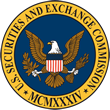In January, the Securities and Exchange Commission (SEC) enforcement division issued a press release that all broker dealers should review. The enforcement action was related to procedural and technical violations of the Reg SHO locate requirement at Goldman Sachs. Three aspects of the finding are important for other firms, and should prompt internal examinations around their own procedures and technology.
First, the SEC did not allege 0r find that any fails were actually created, or “naked” shorts allowed. In many cases, examinations of locate procedures will arise as a result of Rule 204 investigations, or some evidence of fails to deliver (“naked shorts”) on short sales. That does not appear to be the case in this instance. Brokers should be aware, then, that evenly tightly managed fail control and strong Rule 204 compliance procedures may not guaranty that upstream processes will not be examined on their own merits.
Second, the SEC found that Goldman’s procedures in granting locates on short requests were flawed. Like nearly all broker dealers, Goldman’s automated locate system utilizes start of day inventory/availability feeds from potential lenders. A reading of the SEC press release suggests that the automated system at Goldman decrements that start of day inventory as locates are granted – a fairly common and conservative approach. The problem described was that locates that failed or did not otherwise go through the automated process – and were therefore handled by locate desk representatives – used the same start of day sources but did not take into account locates already granted during the day.
The warning here for broker dealers is that start of day inventory may not be considered strong enough evidence of availability to grant a good locate. The common (and logical) reasoning that if two or three big institutions are “showing” a name, it is a solid locate may not stand up at your next examination.
Third, the SEC found logging procedures deficient. The ruling found that locate logs did not properly differentiate between those granted from fully automated sources, and those performed manually against the same sources. The terminology used by the locate desk reps when manually logging a locate seemed to indicate it was from an automated source as noted above. The SEC finding made a strong point that the broker needs to make a very clear distinction – not only in terms of source, but also in terms of process used; and that logs need to be explicitly descriptive.
For the full text of the press release, click here: SEC Press Release January 14th, 2016


